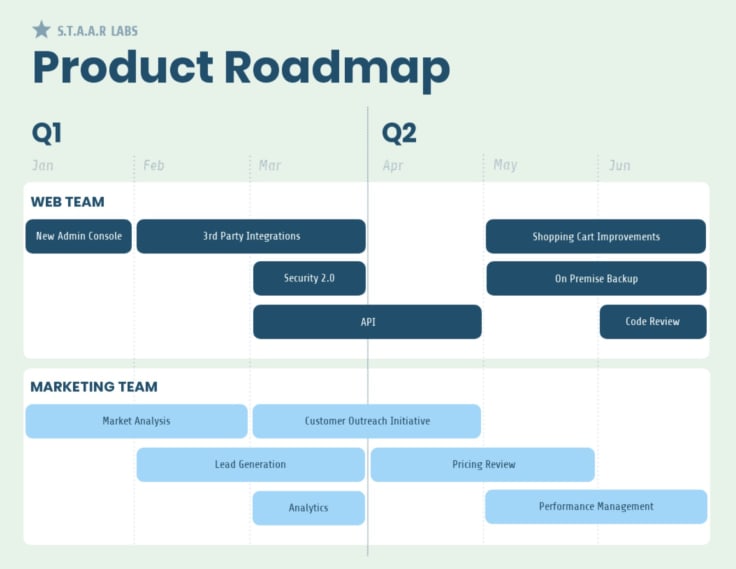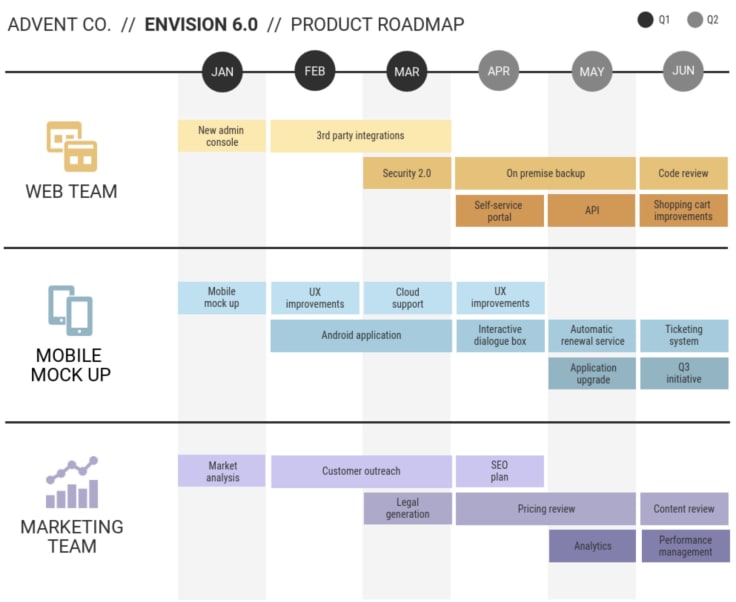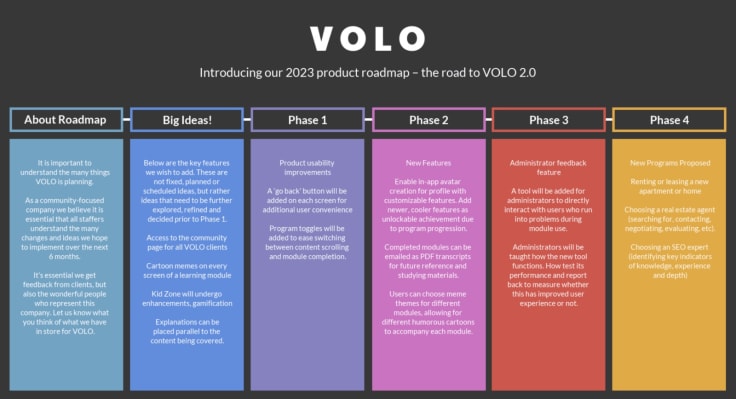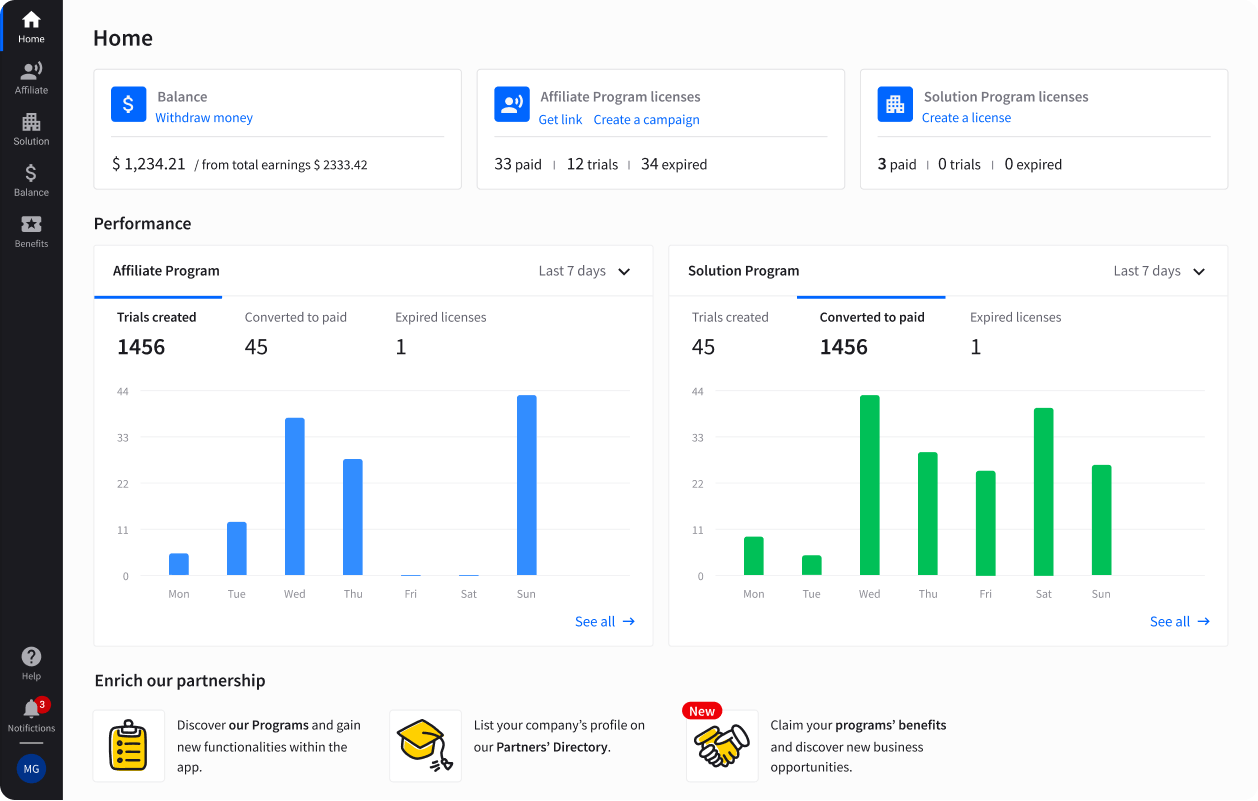Showing top 0 results 0 results found
Showing top 0 results 0 results found

When your company is working towards product launch, product roadmapping is crucial to guide your team towards success.
But creating a good product roadmap requires a few key decisions to be made well in advance so that everyone is on the same page and working towards the same goals.
So, how do you create a product roadmap that leads to success?
In this article, I will outline some of the best practices for creating efficient product roadmaps using roadmap templates.
But first, here’s what you need to know about the basics of product roadmapping.
What is a product roadmap?
A product roadmap is an essential visual with a high-level overview of the product journey—the roadmap usually includes most of the below steps:
- Ideation or brainstorming
- Practical research
- Design and implementation
- Testing
- Product launch
Product roadmaps can take a variety of different forms. Some look like Gantt charts, like the below, while others take on the form of a simple timeline, or an infographic.

The way a product roadmap looks largely depends on the needs of the product management team and the complexity of the process.
The visual design of your roadmap aside, there are a few best practices that should be followed by everyone adopting a product roadmap.
Best practices for product roadmapping
Product roadmapping is an essential and efficient process that can make the product journey more seamless.
Considering that you've established a product market fit already, there are some best practices that need to be followed so that the product manager and their team can achieve their product goals.
Here are some best practices for the successful implementation of a product roadmap.
Set out clear goals
Undertaking the product roadmapping process does not simply mean creating a visual that charts a process from point A to point B—in other words, from product conception to launch.
You need to break the entire process down, sometimes to its most minor components, and then set out goals for each segment.
For instance, your product creation process may require phases to be completed before the next step can be attempted.
You need to include these in your roadmap with clearly defined goals so that the team knows what they need to aim for and achieve before moving on.
These goals could be the implementation of new buttons in an app, added functionality on a website, or the manufacturing of parts for the final product.
Whatever the goals for your stages of product launch, they should be clearly defined and assigned to the correct teams, as you can see in the below example.

By setting goals for your teams and team members, you make it easier for everyone involved to function as a cohesive whole.
Highlight priorities
Speaking of setting goals, it is also important to convey which aspects of the product journey need to be prioritized over others.
Product managers must remember that not everyone in their team, and definitely not in the organization, is focused on the same end goal.
Many lower level employees have distinct tasks that they need to complete. Though these contribute heavily to the final product, these tasks are often end goals in themselves.
Additionally, product-related tasks can get clumped in with employees’ other duties, which may lead to them prioritizing another project instead.
Which is why the product manager needs to highlight priorities within the product roadmap itself.
However, this can often be a challenge. The process of creating a new product can be unpredictable, and there are several variables beyond a manager’s control.
What a manager can do, in this case, is to examine what activities can be quantifiably measured and highlight those as a priority.
It is also safe to assume which steps would not be possible without the completion of other goals—you can’t start designing the data-driven UX of an app without a concept, for instance.
At all times, it is important to look at your end goal—that is how you can determine what aspects can safely be prioritized over others.
Manage expectations
The other difficulty with determining priorities is that one doesn’t want to step on anyone’s toes, or make any departments feel like you aren’t giving their needs enough weight.
Product managers will find themselves struggling to achieve a delicate balance between hearing everyone out and giving them their due, with prioritizing aspects that will achieve the end goal.
It is important to note that every department is looking at the product from their point of view.
Operations will want a sample to test so they can train staff, whereas marketing might want a chassis to photograph for their collaterals.
It may be possible to achieve results for one department faster than another, but that does mean that you will have to deliver the bad news to someone sooner rather than later.
Instead of leaving everything up in the air, clearly define achievable goals (to the best of your knowledge) in your product roadmap, and explain why certain steps can’t be fast tracked.
This will make it easier to manage the expectations of teams and higher executives who aren’t directly involved with the day to day workings of the product adoption strategy, but who still have a vested interest in it.
Tailor the roadmap to the audience
An important point to remember when creating a product roadmap is that not everyone involved—either directly or indirectly—needs to be made aware of every aspect of the plan.
Some team members may be required to come in at a later stage, whereas others will finish their key components early on and have little to do with the product from then on.
Why do either of these groups have to see the product roadmap through from start to finish? They don’t, and you need to tailor your roadmap with that knowledge in mind.
Divide up your roadmap—as you can with most templates—and highlight the portions that are relevant to the departments you send them to.
Look at the below roadmap example that divides up the phases by color. The same can be implemented for when you are sharing the roadmap with different teams.

For instance, if a new functionality has been added to the product that could potentially drive up sales, you can highlight that section when circulating the roadmap to the sales team, but not when you send it to the operations team.
This process does require some forethought, but it will better help product managers manage expectations while also keeping relevant people in the loop about their own priorities.
Avoid overreaching
When the idea for a new product is discussed, it can be easy to fall into the trap of imagining other aspects that can be achieved during the process.
Look at this roadmap example and how it neatly divides the timeframe of the product plan.
There is enough flexibility here to add or subtract elements as and when required, without any overextension of the goals or expectations from team members.
Product managers must fight the temptation to overreach and over-promise in the product roadmap by asking themselves whether the process and functionalities they are planning to include in the roadmap are actually achievable or merely wishful thinking.
And this is particularly important when product managers are fielding requests from different departments—everyone wants the product to reflect their needs, after all.
A certain amount of firmness is required for this, alongside a tight hold on the product roadmap.
Ensure that people can comment and reply on the roadmap, but limit editing access to a shareable roadmap document.
This will discourage people from adding their own requirements into the roadmap without consulting the manager—you don’t want to put undue pressure on the team.
Incorporate feedback methods
We have already mentioned that the product roadmapping process can’t be air-tight—there are some aspects that are too up in the air even as the team reaches the end goal.
But as the product journey progresses, certain aspects will become more clear, while others will change, or have to be removed completely.
And these changes will affect different people at different times. In fact, not noting a change could lead to disaster—you don’t want team members working on a redundant task, or creating a part that no longer fits.
Keeping people appraised of what is happening in the product journey at all times is an extremely important part of product roadmapping.
However, roadmapping needs to have two-way communication, as much as any other project does. It isn’t enough to inform people of updates—you need to know how they affect others.
As a product manager, you will have a higher level understanding of the impact of changes, which is why you need to create a process for receiving and accepting feedback on the product roadmap.
Be open to the feedback you receive—some deadlines may not be achievable, while certain teams may find themselves questioning the reasoning behind a particular task.
Feedback is always necessary in all projects, and must be considered when creating product roadmaps.
Regularly review the roadmap
Having spoken about the importance of feedback, we have also implied that reviewing the product roadmap is a necessary part of the job.
Creating a product roadmap at the start of the process doesn’t mean that it will remain the same right through to the end.
The product roadmap should be reflective of the changes, updates, and completion of tasks.
Which is why reviewing the roadmap should become an intrinsic habit for the product management team.
Schedule a day and time when you look over the roadmap and acknowledge any changes that have been made and whether the feedback given can be accomplished.
Regular reviews of the product roadmap will ensure that no updates are missed and that feedback is acknowledged in time, making for a more efficient system.
Product roadmapping creates efficiency
It is important to remember that no product is created in isolation—numerous people and teams are involved in the creation and implementation of one product.
Juggling the various responsibilities, expectations, and goals can be a challenge for a product manager, but with a product roadmap, the process will become easier and more efficient.
There are many benefits to using a product roadmap and with these few best practices product managers can create an efficient system that will result in a well-made product.
Cover photo by delfi de la Rua on Unsplash



